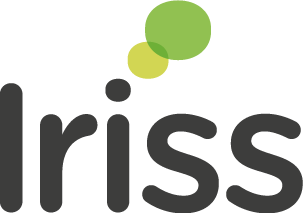A big part of my job is running training sessions about lesbian, gay, bisexual and transgender (LGBT) identities for staff who work in older peoples’ services.
These sessions are about supporting people to feel comfortable talking about sexual orientation and gender identity in their practice – so that they can avoid making assumptions, and feel more confident to challenge prejudice. While some of that work includes ensuring that people know about the best language to use and what the issues are, it’s really important to move beyond rote learning, and into deeper empathy and understanding; to cultivate good instincts around gender identity and sexual orientation, especially as lots of people have never had the chance to have these discussions before.
Spending three hours lecturing people is not really going to get me anywhere with that – so I try to include activities which support people to think through the issues in a more organic way. That’s where creativity comes in!
My favourite activity to bring to these sessions is a storytelling exercise, which was developed by Richard Bliss and Kate Sweeney of Equal Arts, and taught to me last year.
It’s based around a timeline of events in LGBT history – from the first gender reassignment surgeries in the late 1940s, to the Stonewall riots at the end of the ‘60s, to the Equality Act in 2010. In groups of two or three, I then ask people to write the imaginary life-story of someone who is lesbian, gay, bisexual and/or transgender, and is turning 90 today – and then to tell it.
Groups come up with names, identities, family backgrounds, and birthplaces – and then keep going, imagining what it was like for a gay man growing up in rural Wales in the 30s, or a lesbian coming out in Edinburgh in the 60s, or a bisexual person embarking on their first same-sex relationships later in life, or a transgender person finally gaining the legal right to have their gender recognised in 2004, aged 79.
People are only ever imagining one possible life-story of literally millions – each group comes up with a different story, exploring different possibilities and experiences, illustrating the myriad ways that LGBT people have lived their lives in the face of severe discrimination and stigma. This avoids generalising or stereotyping, whilst supporting people to imagine what life might be like for an older LGBT person today having had those experiences.
There have been some really moving moments. Some people have based their stories on people from their own lives – including older relatives who never spoke about their same-sex relationships – which can be quite emotional, and feels like a privilege to hear.
If you move in circles which are positive and accepting, it’s easy to forget that discrimination is still something that LGBT people have to worry about, and older LGBT people have particular worries. This storytelling activity helps to create some understanding of that – and highlights the need to be really visible in welcoming LGBT people.
Want to run your own LGBT awareness training? This is a great activity to try with your colleagues – you can find the timeline, along with plenty more resources, on our website.

